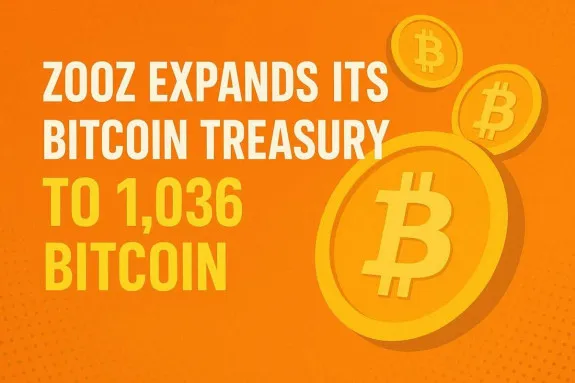The fourth quarter may quickly be dominated by the ETF narrative, boosting related areas such as DeFi.
Written by: Dami-Defi
Translated by: AididiaoJP, Foresight News
Bloomberg predicts that following the Bitcoin and Ethereum ETFs, more than 200 cryptocurrency ETFs will be launched in the future. Will altcoins receive the same favor, or will they face more volatility? Let's analyze in depth:
- Historical Background
- DATs: Collateral Risks and MNAV Observations
- Bullish and Bearish Arguments for Altcoin ETFs
- How Did We Get Here? Key Catalysts
- Macro Impact: $300 Billion in Stablecoin Liquidity Will Drive DeFi Bull Market
- Contrarian Signals
- What to Watch During ETF Launch
- Three Major Influential ETFs to Watch
Historical Background
Since the launch of the first ETFs, the cryptocurrency ETF space has undergone significant changes. The total net assets of U.S. spot Bitcoin ETFs have exceeded $146 billion, solidifying Bitcoin's dominant position with a 59% market share in the crypto market. Ethereum ETFs rank second, holding about $25 billion in assets. Cumulative net inflows into spot Bitcoin ETFs have now surpassed $50 billion, and the market continues to see daily inflows.
Before the emergence of cryptocurrency ETFs, traditional finance held digital asset exposure through vehicles like GBTC and MSTR. This method gave rise to Digital Asset Treasury companies (DATs), which accumulate specific altcoins like ETH, SOL, XRP, etc., allowing investors to gain exposure through stocks. DATs serve as a bridge between the pre-ETF era and the currently pending altcoin ETFs, and they are also where risks arise.
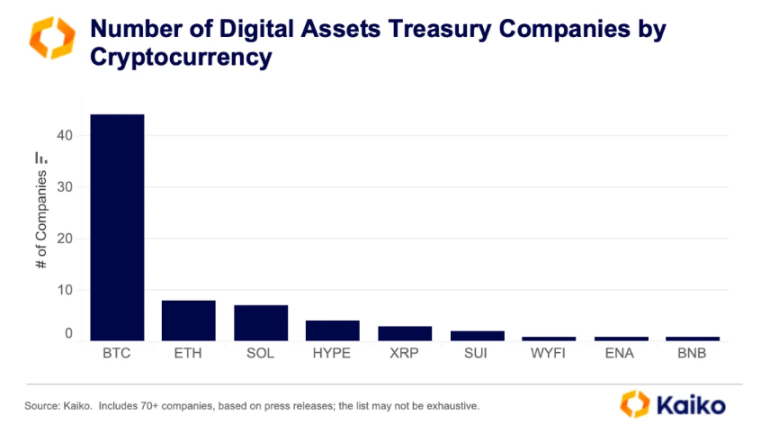
DATs: Collateral Risks and MNAV Observations
Market capitalization to net asset value (MNAV) multiples are important as they indicate how easily a DAT can raise funds. When this multiple is above 1, it is easy to obtain debt and purchase more tokens. If it remains below 1, financing will dry up, and the sale of reserves becomes a real risk.
Pay close attention to the MNAV and premiums of top DATs, PIPE unlock dates, liquidity, and any balance sheet information in 10-Q reports or operational updates. Pressure may also spread; troubles in smaller DATs could affect larger DATs, or issues at the top could create ripple effects downward.
Bullish and Bearish Arguments for Altcoin ETFs
Bullish Arguments
The rise of altcoin ETFs could soon bring significant liquidity boosts to the market. Take the ProShares CoinDesk 20 ETF as an example; it includes important assets like HBAR, ICP, XRP, and SOL. A total of 155 ETPs tracking 35 cryptocurrencies are awaiting approval. A large influx of liquidity into these ETFs will drive up the prices of related altcoins, continuing the upward momentum of Bitcoin and Ethereum ETFs.
Additionally, the inflow of funds into ETFs drives market attention to the underlying tokens, prompting some allocators to purchase higher beta DATs. DATs then raise funds and accumulate more tokens, which could further strengthen the altcoin narrative. More importantly, issuers like BlackRock, Fidelity, VanEck, and Grayscale provide a credible gateway. This could unleash larger and more stable investments than just accessing through exchanges.
Bearish Arguments
On the other hand, altcoins may struggle to regain their usual bull market hype, and this weak demand could limit their performance. The CoinDesk 20 index highlights this issue: BTC and ETH dominate with weights of 29% and 22%, while altcoins like ICP and FIL only account for 0.2% in the basket. This concentration means more funds will flow to mainstream coins, benefiting them more.
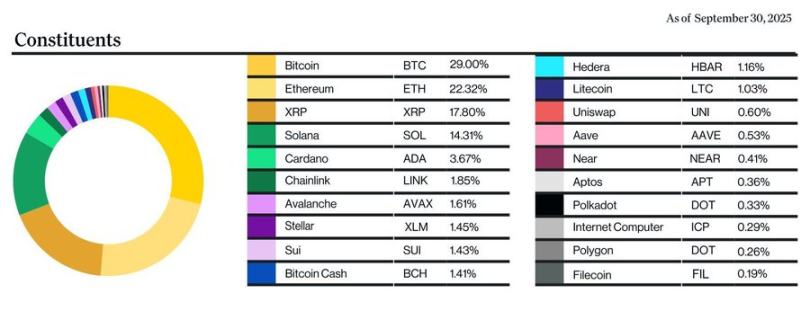
Moreover, if funds shift from DAT stocks to altcoin ETFs, the net asset value (MNAV) of DATs could drop below 1, leading to a funding drought. This could force the sale of reserves, directly putting selling pressure on those altcoins.
Microstructure at Launch: Even with a mid-term bullish outlook, expect a 24-72 hour "buy the rumor, sell the news" volatility around the ETF listing.
How Did We Get Here? Key Catalysts
The growing interest in altcoin ETFs is driven by several factors:
On September 17, the U.S. Securities and Exchange Commission (SEC) introduced "General Listing Standards for Commodity Trust Shares." This standard shortens the approval time for new ETFs and makes the process more predictable. Thanks to the SEC's general listing standards, we may see multiple ETFs approved shortly after the government reopens.
Earlier, in July, the SEC allowed non-Bitcoin cryptocurrency ETFs to conduct physical redemptions, aligning them with traditional commodity ETFs. This reduced liquidity friction and attracted more institutional funds.
The success of spot Bitcoin and Ethereum ETFs has also driven broader adoption, with 59% of institutions expected to allocate more than 10% of their portfolios to digital assets by mid-2025.
Rule of Thumb (Strict Standards): Spot trading venues regulated by ISG, or at least six months of regulated futures trading with data sharing, or tracking existing listed ETFs with over 40% correlation. This has cleared obstacles for many major and mid-cap tokens.
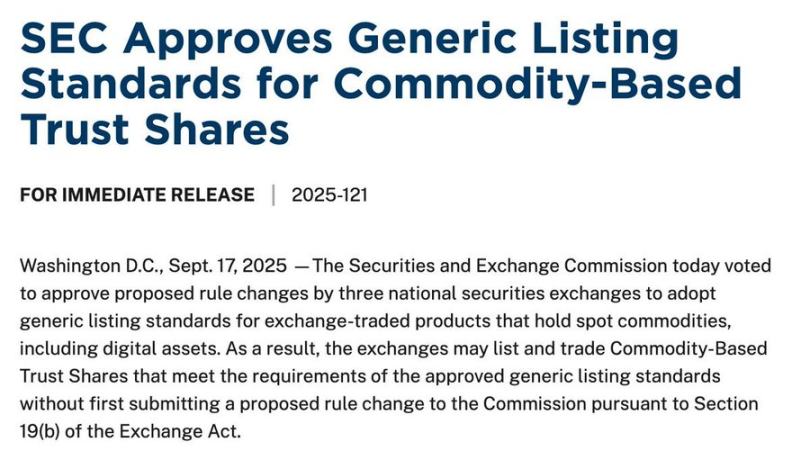
Macro Impact: $300 Billion in Stablecoin Liquidity Will Drive DeFi Bull Market
As of October 2025, nearly $300 billion in stablecoin liquidity is circulating globally. This massive infrastructure lays the groundwork for ETF-driven capital catalysts, bringing institutional funds into the DeFi ecosystem and amplifying returns.
The synergy between $300 billion in stablecoin liquidity and anticipated inflows into altcoin ETFs could create a multiplier effect. For example, the inflows observed in Bitcoin ETFs relative to market cap suggest that every $1 of ETF capital could inflate market cap by several dollars. If altcoin ETFs gain attention, this could unleash tens of billions of dollars, pushing the total crypto market cap to new highs by the end of 2025.
With increased regulatory clarity under Trump-era policies, the influx of institutional capital could significantly boost DeFi protocols, especially those integrating assets like LINK and HBAR, which connect traditional finance and blockchain, or staking ETFs for altcoins like TAO and INJ applied by REX-Osprey.
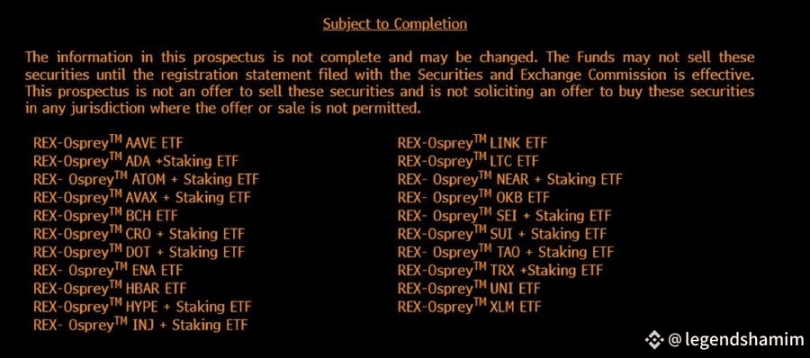
Additionally, against the backdrop of a weakening dollar and risk assets nearing historical highs, ETFs provide a convenient path for institutions to rotate along the risk curve from BTC to large-cap altcoins, then to mid-cap stocks and DeFi.
Multiplier Warning: The impact of inflows on valuations depends on sustained net creation and healthy funding basis. DAT pressure (MNAV below 1 or unlock events) could temporarily suppress this multiplier.
Contrarian Signals
As a consistent contrarian investor, Jim Cramer recently urged investors to sell cryptocurrencies and shift to stocks. Given his history of being wrong at key turning points, I believe now is the time to hold crypto assets more firmly.
Concerns that ETFs will cannibalize DATs and trigger liquidations coexist with unprecedented strong market access and clarity, ETF channels, and approval queues. If inflows remain strong in the first week, this mismatch could create a bullish pattern. Historically, high concerns about DAT pressure have coexisted with improved market access, often marking accumulation phases rather than market tops.
What to Watch During ETF Launch
- Days 0-3: Expect pre-trading and the risk of "buy the rumor, sell the news." Monitor net creation and redemption volumes as well as the bid-ask spreads displayed on screens.
- Weeks 1-4: If net inflows remain strong and spot prices align with perpetual contract prices, the bias towards buying on dips may continue.
- Rotation Signals: Higher weekly highs/lows of other coins relative to BTC indicate expanding altcoin demand. If this signal fails to appear, the tendency will be to maintain a heavy BTC position.
- Cross-Asset Clues: DAT premiums improving with ETF inflows will create a positive feedback loop.
Three Major Influential ETFs to Watch
- Solana: SOL is the most likely altcoin to benefit from diversification, aside from BTC and ETH ETFs. Among the 155 cryptocurrency ETFs awaiting approval, 23 target Solana. This strong institutional demand signal indicates potential fund flows. Therefore, ETFs tracking SOL are among the most important to watch and could yield significant investment returns.
- ProShares CoinDesk 20 ETF: Tracks the top 20 cryptocurrencies, including BTC, ETH, and altcoins like XRP, which can diversify institutional exposure.
- REX-Osprey 21-Asset ETF: Aims to provide exposure to specific cryptocurrencies and offers staking capabilities for tokens like ADA, AVAX, DOT, NEAR, SEI, SUI, TAO, and HYPE.
The fourth quarter may quickly be dominated by the ETF narrative, boosting related areas such as DeFi. Whether altcoins can capture the same demand as BTC remains to be seen, but this momentum is undeniable. Stay confident and prepare for the upcoming altcoin ETF narrative.
免责声明:本文章仅代表作者个人观点,不代表本平台的立场和观点。本文章仅供信息分享,不构成对任何人的任何投资建议。用户与作者之间的任何争议,与本平台无关。如网页中刊载的文章或图片涉及侵权,请提供相关的权利证明和身份证明发送邮件到support@aicoin.com,本平台相关工作人员将会进行核查。
